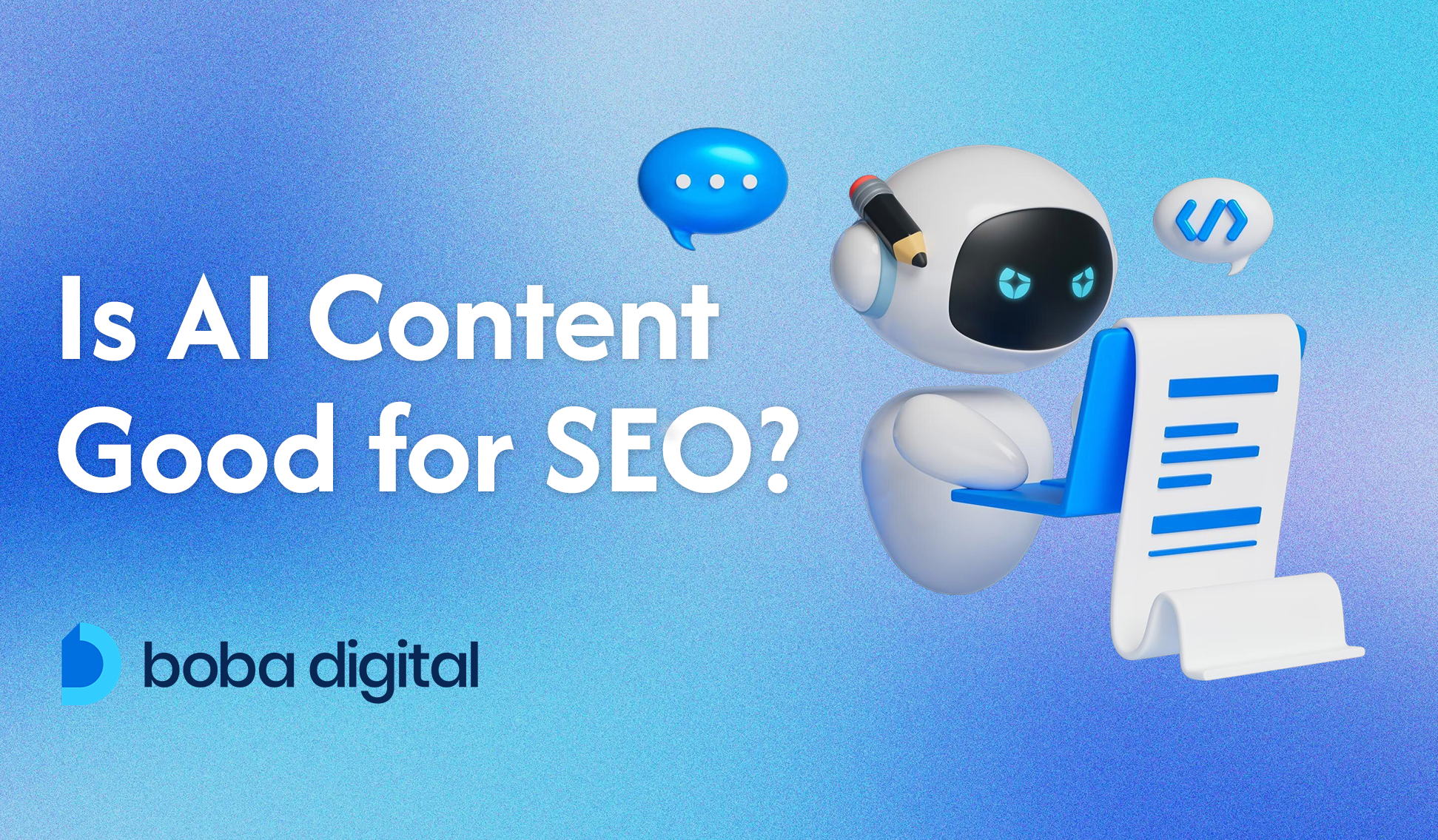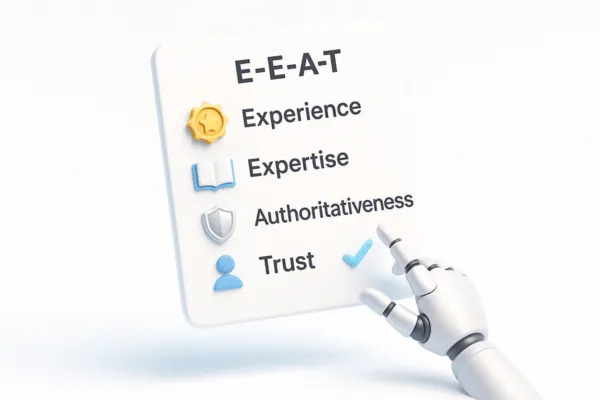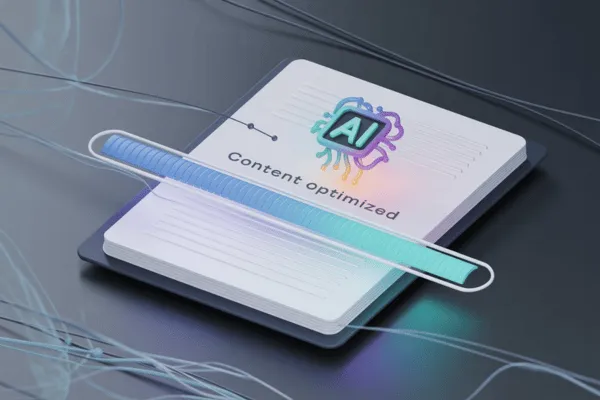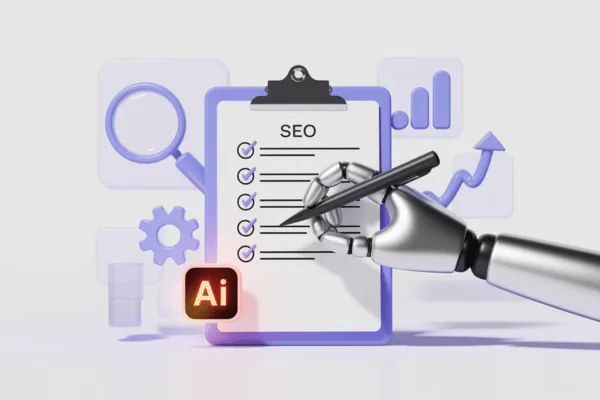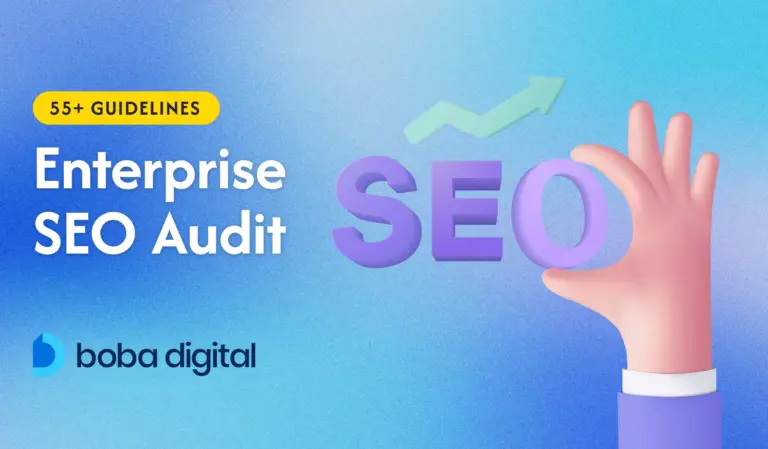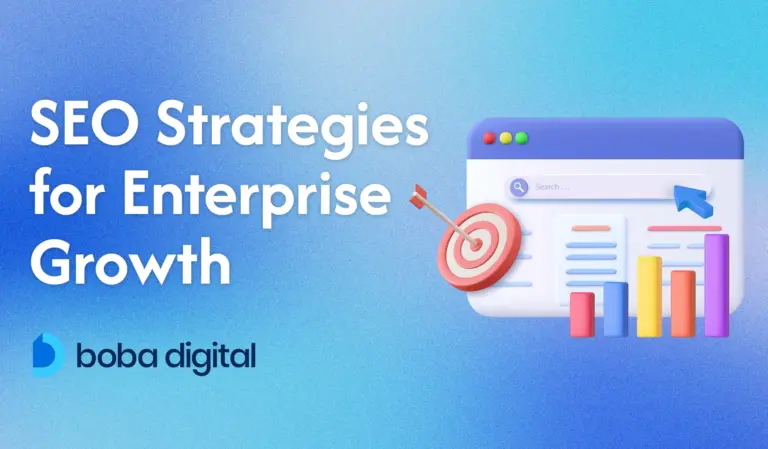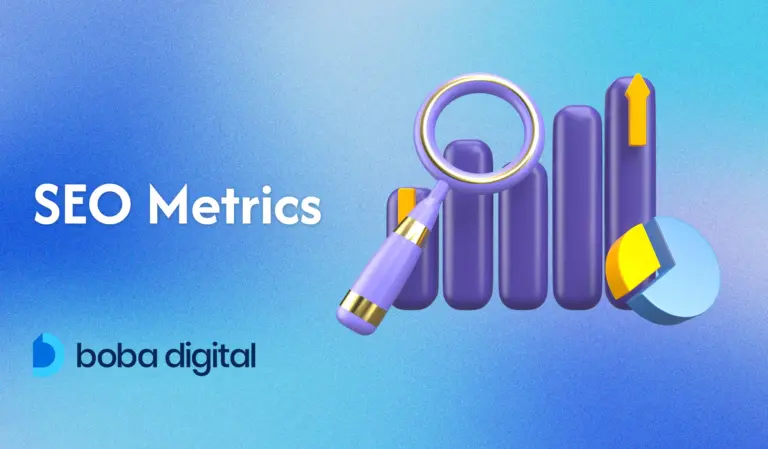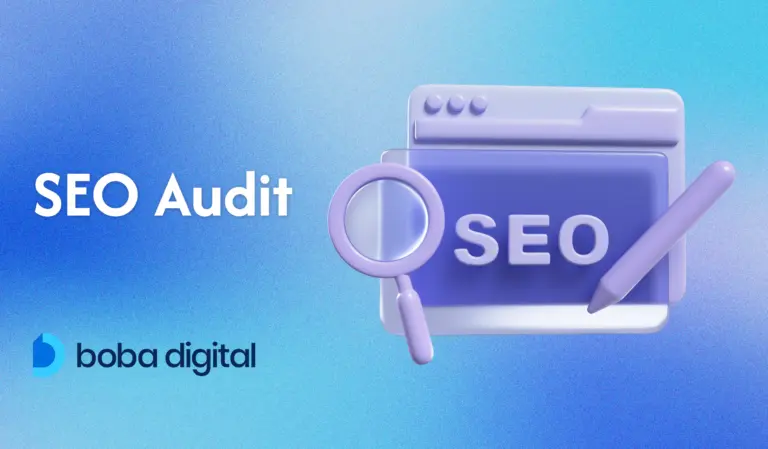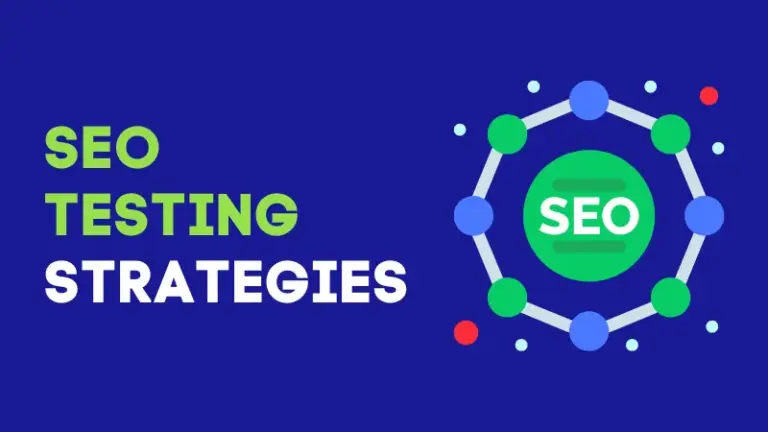Is AI Content Good for SEO? Here’s What You Should Know
We’ve all typed it into Google at some point: Is AI content good for SEO? With AI tools now baked into every marketer’s workflow, the temptation to let a robot do the writing is real. You get speed, volume, and even some slick formatting — all in one click. But here’s the million-dollar question: is it helping your search rankings or quietly sabotaging your SEO strategy?
As content floods the web faster than ever, search engines are sharpening their rules. So, while AI-generated content may feel like a shortcut, it could come with hidden costs if you’re not careful.
In this guide, we’re pulling back the curtain — but not just yet. We’ll get into what Google really says, the risks, the rewards, and how to keep your rankings intact while using AI the smart way.
Ready to find out if AI-written content is your SEO secret weapon or silent killer? Let’s get in.
Is AI Content Good for SEO?
The short answer? Yes, it can be — but only if you’re doing it right.
AI-generated content has become a critical tool in the digital marketing space, streamlining the content creation process for SEO specialists and content writers alike. Whether you’re drafting blog posts, meta descriptions, or landing pages, AI content tools can help produce content faster and more efficiently than ever.
But here’s where it gets tricky. Just because content is created quickly doesn’t mean it will rank. If you’re using AI content generators to churn out automatically generated content without thought or oversight, it could end up hurting your SEO rankings instead of helping them.
Low quality content that lacks depth, originality, or fails to match search intent won’t just fall flat — it may trigger Google’s spam filters or be flagged by its helpful content system.
Take Google’s stance for example. The search engine giant doesn’t care if a human or an AI writer created your article. What it does care about is whether the content delivers valuable insights, demonstrates E-E-A-T (experience, expertise, authoritativeness, and trustworthiness), and serves your target audience.
If it feels like fluff or exists just to manipulate search rankings, that’s when problems arise.
Say you run a local business and you publish blog posts using AI tools that answer common search queries with clear, helpful explanations. That’s a smart SEO strategy. But if you rely on AI to flood your site with vague, duplicate content stuffed with keywords just to game search results, you’re on thin ice.
In short, using AI-generated content can absolutely support your SEO efforts. Just remember, your success still depends on how well you guide the writing process, whether you maintain your brand voice, and how much human oversight you apply along the way.
Quality beats automation every time.
Google’s Official Stance on AI Content
Google’s guidance on AI-generated content
If you’re waiting for Google to drop the ban hammer on AI content, don’t hold your breath. The real issue isn’t the tool but the output.
According to Google’s own documentation, what matters most is whether your content is helpful, accurate, and created with users in mind. The search engine has made it clear that it doesn’t discriminate based on how content is produced.
You could write it by hand, dictate it into a mic, or use AI writers to generate content — the key is whether the final result offers value.
Google’s systems, including tools like SpamBrain, are designed to detect spammy tactics and low-quality pages. But that applies across the board, regardless of whether a machine or a human was behind the keyboard. Automatically generated content that exists only to stuff keywords or game search results is what triggers penalties, not the mere use of AI tools.
Their guidance makes it simple: if you’re using AI content tools to create helpful content that answers real search queries, matches search intent, and avoids tricks like hidden keywords or fake authority signals, you’re in the clear.
On the flip side, if your strategy is to mass-produce generic articles with the goal to manipulate search rankings, that’s where Google draws the line.
The takeaway? Google isn’t anti-AI — it’s anti-garbage. Use AI content generators responsibly, and you’re playing by the rules. Quality, relevance, and originality still win the game.
E-E-A-T and Its Relevance to AI Content
Just because AI can write doesn’t mean it should speak for your brand unchecked. That’s where E-E-A-T steps in.
Google’s framework for evaluating content quality — Experience, Expertise, Authoritativeness, and Trustworthiness — isn’t just a guideline. It’s a filter that separates surface-level fluff from meaningful, rank-worthy content. And when AI-written content is involved, that filter becomes even more critical.
Let’s say you’re producing content about credit scores or small business taxes using generative AI. If that content lacks credibility or hasn’t been reviewed by someone who knows the subject inside out, Google’s algorithms won’t give it much attention — and neither will your audience.
AI tools are great at structuring information, but they don’t instinctively know what’s accurate, nuanced, or legally sound. That’s where human oversight becomes a must.
E-E-A-T pushes content creators to go beyond just producing words. It means fact-checking every claim, citing reputable sources, and making sure the final piece reflects real-world expertise. AI content generators can support your content creation, but it’s your job to shape that draft into something that carries authority and earns trust.
Especially for sensitive industries like healthcare, finance, or legal services, content that lacks E-E-A-T can come off as risky or flat-out untrustworthy.
Google knows this — and so do your readers.
Pros of Using AI Content for SEO
Efficiency and scalability in content production
Deadlines pile up, content calendars overflow, and your SEO goals keep expanding — AI helps you keep up without falling behind. One of the biggest advantages of using AI content tools is how quickly and efficiently they support the content creation process, especially when time and resources are limited.
With the help of AI content generators, marketers can produce articles, product descriptions, meta descriptions, and more at a fraction of the time it would take manually. This allows SEO specialists to cover more search queries, build topical authority, and respond to content needs as they arise — all while staying within budget.
Need to scale your content marketing strategy across multiple locations or services? AI makes that possible without the burden of hiring a massive writing team. You can generate content drafts fast, maintain a consistent publishing rhythm, and dedicate more time to strategy and link building.
When paired with human editing and a strong brand voice, AI-generated content becomes a powerful tool for driving organic traffic and supporting long-term SEO efforts.
Streamlining Keyword Research and Topic Clustering
If you’ve ever spent hours buried in keyword tools, you know how time-consuming research can be. This is where AI gives you a serious edge. Instead of manually sorting through endless search queries, you can use AI content tools to handle the heavy lifting.
With the right AI platform, you can instantly uncover long-tail keywords that align with real search intent — even ones your competitors might overlook. These tools also help organize keywords into meaningful topic clusters, which makes your content structure cleaner and more strategic.
Using AI in this way helps you avoid duplicate content and prevent keyword cannibalization. Each page you publish can support a distinct goal in your SEO strategy without overlap or confusion.
If scaling your content plan has felt overwhelming, AI makes it easier to stay focused, efficient, and aligned with what your audience is actually searching for.
Cost-Effectiveness Compared to Traditional Content Creation
Content creation shouldn’t empty your marketing budget, and with AI tools, it doesn’t have to. For businesses looking to scale without burning through cash, AI has made producing SEO content more affordable than ever.
After the initial setup, most AI content platforms charge a flat monthly rate, often between $20 and $100. Compare that to hiring a professional content writer, where just one article might cost anywhere from $75 to $500, depending on the length and niche. Multiply that by dozens of posts per month, and the price gap becomes impossible to ignore.
The savings don’t stop at writing.
In video marketing, traditional shoots can stretch budgets with costs for crew, gear, and editing — often reaching $10,000 or more for a few minutes of content. AI-generated videos, in contrast, offer a low-cost alternative, sometimes costing less than $10 per minute.
This kind of cost efficiency gives you more room to test, optimize, and expand your content strategy. Of course, relying solely on AI isn’t the goal.
You still need human oversight to shape the content, maintain your brand voice, and ensure the end result reflects real value. But for businesses aiming to produce more without constantly increasing spend, AI makes it not only possible, but practical.
Ability to Quickly Generate Content Briefs, Meta Descriptions, and Outlines
Every SEO strategy begins with the basics and those basics can eat up a surprising amount of time. Crafting content briefs, writing meta descriptions, and building outlines might not be glamorous, but they’re essential. With AI tools, these repetitive tasks don’t have to clog your workflow.
Instead of spending 30 minutes writing a meta description or building an outline from scratch, AI can generate both in seconds. You input the topic or keyword, and the tool creates a structured brief with relevant subtopics, suggested headings, and even target word counts.
The same applies to crafting SEO-friendly meta tags, which used to require keyword balancing and multiple rewrites. AI tools can generate content elements instantly, allowing your writers to focus on storytelling, tone, and the actual message.
When your team isn’t bogged down with admin-level work, they can focus on creating high quality content that aligns with brand goals and search intent. It’s a small shift that leads to massive productivity gains.
AI-Powered Content Optimization and Personalization
Getting content in front of the right audience is only half the battle — getting them to engage is where things really count. That’s where AI’s ability to personalize and optimize content comes into play.
Rather than treating every reader the same, AI algorithms analyze real user data like browsing patterns, search behavior, purchase history, and even engagement time. This allows marketers to tailor content that speaks directly to individual users, not just general demographics.
Whether it’s swapping headlines based on past behavior or offering dynamic product suggestions, AI makes personalization seamless and scalable.
Beyond static optimization, AI tools can adapt in real-time.
If your audience starts showing interest in a new topic or product category, the algorithm adjusts — optimizing what content is shown, when it’s served, and how it’s framed. That level of responsiveness used to require teams of analysts and weeks of data crunching.
Now, AI handles it as it happens.
For SEO, this translates into higher engagement, lower bounce rates, and improved performance across key search rankings. When your content feels like it was made just for your audience, the algorithm notices — and so do your readers.
Cons and Risks of AI Content for SEO
Potential for factual inaccuracies and “hallucinations”
If you’ve ever run AI-generated content through an editor and raised an eyebrow, you’re not alone.
One of the most serious drawbacks of using AI content tools is their tendency to “hallucinate” — confidently generating facts, stats, or sources that simply aren’t true.
Even the most advanced AI models can produce content that looks polished but contains misleading or completely fabricated details. This is especially risky for industries like finance, health, or law, where a wrong claim can do more than just cost you a ranking — it can damage your reputation.
Google’s algorithms are designed to reward helpful content and penalize anything that misinforms users, especially if it’s tied to high-impact search queries.
And here’s the catch: AI doesn’t know what’s real. It doesn’t fact-check. So, without human oversight, your blog post might cite a nonexistent report or give outdated advice — all while sounding perfectly legitimate. That’s a serious threat to your site’s E-E-A-T signals and long-term SEO performance.
Accuracy still needs a human eye. Otherwise, that “quick” content shortcut can lead to long-term damage.
Lack of Originality and Unique Insights
AI can write fast — but it doesn’t always write fresh.
One major limitation of AI-generated content is its struggle to deliver original thoughts or firsthand insights. Most AI tools operate by analyzing existing data and rephrasing what’s already been said. That’s fine for general overviews, but it doesn’t help you stand out in a crowded SERP.
Take competitive niches like digital marketing or finance. These industries are saturated with similar content, and readers, not to mention Google’s algorithms, are constantly looking for articles that offer something new.
If your content sounds like a repackaged version of what’s already ranking, it won’t hold attention or earn backlinks.
Tools like ChatGPT, particularly in their free versions, also come with data cutoffs. Ask it to write about “Top TikTok Stats of 2024,” and you might get numbers from 2020. Outdated or recycled information affects your content’s relevance and can push your page lower in search results as Google favors fresher, more accurate pieces.
To compete, your content needs real-world context, updated data, and unique takes — the kind only a human can bring. Without that layer of insight, AI-written articles often fall flat where it matters most: credibility, engagement, and search visibility.
Repetitive or Monotonous Content Structure
After reading a few AI-generated paragraphs, you might start to notice a pattern, and not in a good way.
One of the common issues with using AI for content creation is its tendency to stick to a formula. The structure, transitions, and even tone often feel repetitive, making the content predictable and, frankly, dull.
You can tweak the prompt, change the format, or shuffle the instructions, but AI still falls back on familiar sentence constructions and transitional phrases.
While this may work for basic outlines or low-priority pages, it becomes a problem when you’re trying to keep readers engaged or hold their attention through longer articles.
This lack of variation can lead to higher bounce rates and lower time-on-page — signals that Google doesn’t take lightly when evaluating content quality. Readers want personality, rhythm, and a voice that flows naturally from one idea to the next.
AI tools may get the job done, but without human refinement, the output often reads like a template, not a conversation.
Subpar User Experience (Passive Voice, Poor Readability)
Great content doesn’t just inform — it holds attention. That’s where many AI-generated articles fall short. While they may be grammatically correct, they often miss the mark when it comes to readability and tone.
One common issue is the overuse of passive voice. Instead of sounding clear and direct, the content feels distant and robotic. Readers have to work harder to stay focused, which can quickly lead to drop-offs, especially on mobile, where attention spans are short. Add in awkward phrasing or clunky sentence structures, and even valuable information becomes hard to digest.
AI writing tools also tend to flatten tone.
Without a deliberate edit, the result can feel lifeless, lacking the energy, personality, or nuance that keeps people scrolling. This hurts not just engagement but trust. If your content doesn’t sound like it came from a real person, your audience won’t connect with it, and Google’s helpful content system may pick up on that, too.
Editing for clarity, tone, and flow isn’t optional. It’s what transforms AI-generated drafts into readable, human-centered content that supports both SEO and user satisfaction.
Inconsistent Formatting and Style
AI may be great at getting words on the page, but it often stumbles when it comes to consistency. One moment, the tone feels casual and conversational; the next, it shifts to something overly formal or robotic.
Without a human editor guiding the structure and voice, AI-generated content can veer off-brand quickly especially if you’re aiming for a distinct style that reflects your business values.
Formatting is another area where AI tends to miss the mark. It might switch between bullet points and paragraphs with no clear reason, leave headings uneven, or produce odd sentence pacing that disrupts the reading flow.
These inconsistencies may seem minor at first, but they can break the reader’s rhythm and reduce trust in your content.
Maintaining a consistent voice and structure isn’t just about aesthetics. It helps reinforce your brand identity and ensures your content feels polished and credible — something AI can’t fully guarantee without a human eye reviewing and refining each piece.
Risk of Duplicate Content
When everyone’s using the same AI tools to write about the same topics, it’s no surprise that the output often starts to blur together. That’s the danger of duplicate content and it’s a real threat to your SEO efforts.
If you’re relying on common prompts and letting AI handle your entire content creation process, chances are you’re not the only one. Other websites may be generating eerily similar pieces, especially if they’re targeting the same keywords or topics. This overlap can lead to near-duplicate content across multiple sites, which confuses search engines and weakens your ability to rank.
Google doesn’t always penalize duplicate content outright, but it does choose which version it considers the most relevant.
If your AI-written article isn’t unique enough, you risk being ignored entirely. That means less visibility, fewer clicks, and lower organic traffic even if the topic is relevant and well-optimized.
Standing out in search results requires more than just filling in blanks. It means creating content with distinct value, original insights, and a voice that reflects your brand — all of which need human input to get right.
Over-Reliance on AI and Lack of Human Touch
It’s easy to get caught up in the convenience of AI — fast drafts, instant ideas, and content ready in minutes. But in the race to publish more, it’s dangerously easy to forget who the content is actually for: people.
AI can mimic tone, follow structure, and churn out content at scale, but it doesn’t feel. It can’t draw from lived experience, tell a personal story, or offer the kind of nuance that comes from real-world understanding.
That’s where human writers still hold the advantage — in creativity, empathy, and the ability to connect on an emotional level.
A helpful content strategy isn’t just about meeting SEO checkboxes. It’s about making someone feel understood when they land on your page. Maybe they’re looking for answers, or maybe they’re trying to solve a specific problem. Either way, robotic explanations won’t keep them reading. A thoughtful voice will.
Using AI as a supporting tool is smart. Relying on it as your only writer? That’s when quality starts to slip. If your goal is to create helpful content that earns trust and drives results, human insight should always lead the way.
Here’s a clear and concise table outlining the pros and cons of AI-generated content for SEO:
| Pros | Cons |
| Speeds up the content creation process | Risk of factual inaccuracies and AI “hallucinations” |
| Reduces content production costs | Lacks originality and fresh perspectives |
| Helps generate content briefs, meta descriptions, and outlines quickly | Often produces formulaic or monotonous structure |
| Enables large-scale content production without increasing headcount | May use passive voice and have poor readability without editing |
| Assists with keyword research and topic clustering | Inconsistent formatting and brand voice without human review |
| Supports real-time personalization using audience data | Potential for duplicate content when using common prompts or tools |
| Optimizes content strategy across multiple topics or verticals | Over-reliance can weaken emotional engagement and human connection |
| Enhances efficiency for SEO teams and content writers | Requires human oversight to ensure alignment with Google’s quality standards and E-E-A-T |
Best Practices for Using AI Content in SEO
Combining AI speed with human expertise for optimal results
AI can be a powerful tool in your SEO strategy, but it performs best when guided by human judgment. Instead of relying on it as a complete solution, think of it as your content assistant. It is fast, consistent, and helpful, but it still needs direction.
A smart approach is to use AI for the first draft. Let it handle the basics, such as outlines, structural templates, or sections filled with data like statistics or comparisons. This gives your team a head start and cuts down the time spent on routine tasks.
From there, human editors and subject experts step in to refine the content. They check facts, adjust tone, and align everything with your brand voice. This step turns AI-written content into something truly valuable, meeting both SEO standards and user expectations.
When you combine AI’s efficiency with human creativity, you get content that scales with speed and still connects with readers.
Human Editing and Fact-Checking for Accuracy and Originality
No matter how advanced your AI tool is, raw output is never the final product. AI can structure sentences and organize ideas, but it cannot fact-check or validate sources. That responsibility still falls on you, and it’s non-negotiable.
Every piece of AI-generated content should go through a human editor before publishing. This step isn’t just about fixing typos. It’s where you check facts, remove generic phrasing, and bring in real expertise.
Whether it’s correcting outdated statistics, adding context, or injecting a fresh perspective, human editing is what transforms generic text into credible, high quality content.
Search engines reward originality and accuracy, and your readers expect nothing less. Publishing unchecked AI text not only risks your SEO rankings but can also damage your brand’s reputation. If you want to create helpful content that stands out, humanizing the final piece is not optional — it’s essential.
Aligning Content with User Intent and E-E-A-T Guidelines
Great SEO content doesn’t just rank — it meets people where they are. Whether your content is written by a human or assisted by AI, it must serve a clear purpose for your audience. That means understanding user intent and shaping every piece to match it.
If someone is searching for “how to apply for a small business loan,” they don’t want a vague overview. They need specific steps, accurate information, and insights that reflect real experience.
That’s where Google’s E-E-A-T framework comes into play: Experience, Expertise, Authoritativeness, and Trustworthiness. Your content should show that it was created by someone who knows the topic, not just repeating what’s already out there.
AI tools can support this process, but they can’t do it alone. It’s up to you to make sure each article reflects real knowledge, includes accurate details, and builds confidence with your audience.
Avoiding Spammy or Manipulative Content Practices
Just because AI can churn out hundreds of pages doesn’t mean it should. The temptation to flood your site with keyword-stuffed, low-effort content is real, especially when it only takes a few clicks.
But what feels like a shortcut now can quickly turn into a long-term SEO problem.
Google’s algorithms are built to detect manipulative tactics. Thin content with no real value, unnatural keyword placement, or pages created just to game the system are all red flags. Using AI to mass-produce this kind of content won’t just hurt your rankings — it can lead to penalties that are difficult to recover from.
Instead of focusing on volume, prioritize content that answers real questions and reflects genuine expertise. Whether you’re writing a product description or a detailed guide, quality always outperforms quantity.
When used with intention, AI can support your SEO goals. But when used to cut corners, it often backfires.
Conclusion
AI content isn’t the villain or the hero — it’s the tool. When used responsibly, it can help you move faster, scale smarter, and support your SEO strategy in a big way. But without human guidance, fact-checking, and originality, it’s just words on a screen.
The real winners in search are still those who focus on quality, relevance, and value. If your content speaks to real people, solves real problems, and reflects real expertise, it doesn’t matter who (or what) wrote the first draft.
At Boba Digital, we know how to strike that balance. Our team combines smart AI tools with real human expertise to craft SEO content that ranks, converts, and connects. If you’re ready to scale your content without sacrificing your brand voice, let’s talk.
Contact Boba Digital and start turning smart content into real results.
FAQs
Does Google penalize websites for using AI-generated content?
No, Google does not automatically penalize websites for using AI-generated content. What matters is whether the content provides value, aligns with search intent, and follows Google’s helpful content system. If AI tools are used to generate content that is spammy, thin, or designed to manipulate search rankings, that’s when penalties can occur. Focus on creating high-quality content that reflects E-E-A-T standards, regardless of how it’s produced.
Can AI content rank as well as human-written content?
Yes, AI content can rank well in Google search results when it’s optimized properly. To perform well, it must be helpful, accurate, and aligned with your SEO strategy. Many SEO content writers use AI tools to create content faster, but the key is combining AI efficiency with human oversight. Editing for tone, readability, and originality ensures your content meets user expectations and boosts search rankings.
What are the main risks of using AI content for SEO?
Using AI-generated content without review can lead to factual inaccuracies, poor formatting, and low-quality content that affects SEO performance. There’s also the risk of producing duplicate content or using passive voice that reduces engagement. Search engine algorithms like SpamBrain look for signs of unhelpful content, so failing to add unique insights, real-life examples, or brand voice can hurt your SEO efforts.
How can I avoid duplicate or generic content when using AI?
To avoid duplicate content, never rely solely on AI content generators with basic prompts. Customize your input, tailor the output to your target audience, and edit thoroughly to ensure originality. AI generation is a helpful tool, but originality comes from combining content tools with your expertise. Creating valuable content with a specific word count, clear formatting, and a unique perspective helps you stand out in search results.
How much AI content is acceptable?
There’s no set limit to how much AI content you can use, as long as it aligns with SEO best practices and Google’s guidelines. Whether you’re producing blog posts, meta descriptions, or topic clusters, the content must be relevant, engaging, and factually correct. The goal is not volume, but value. As long as human writers review and refine what AI produces, using AI-generated content can be good for SEO and support your overall content strategy.

